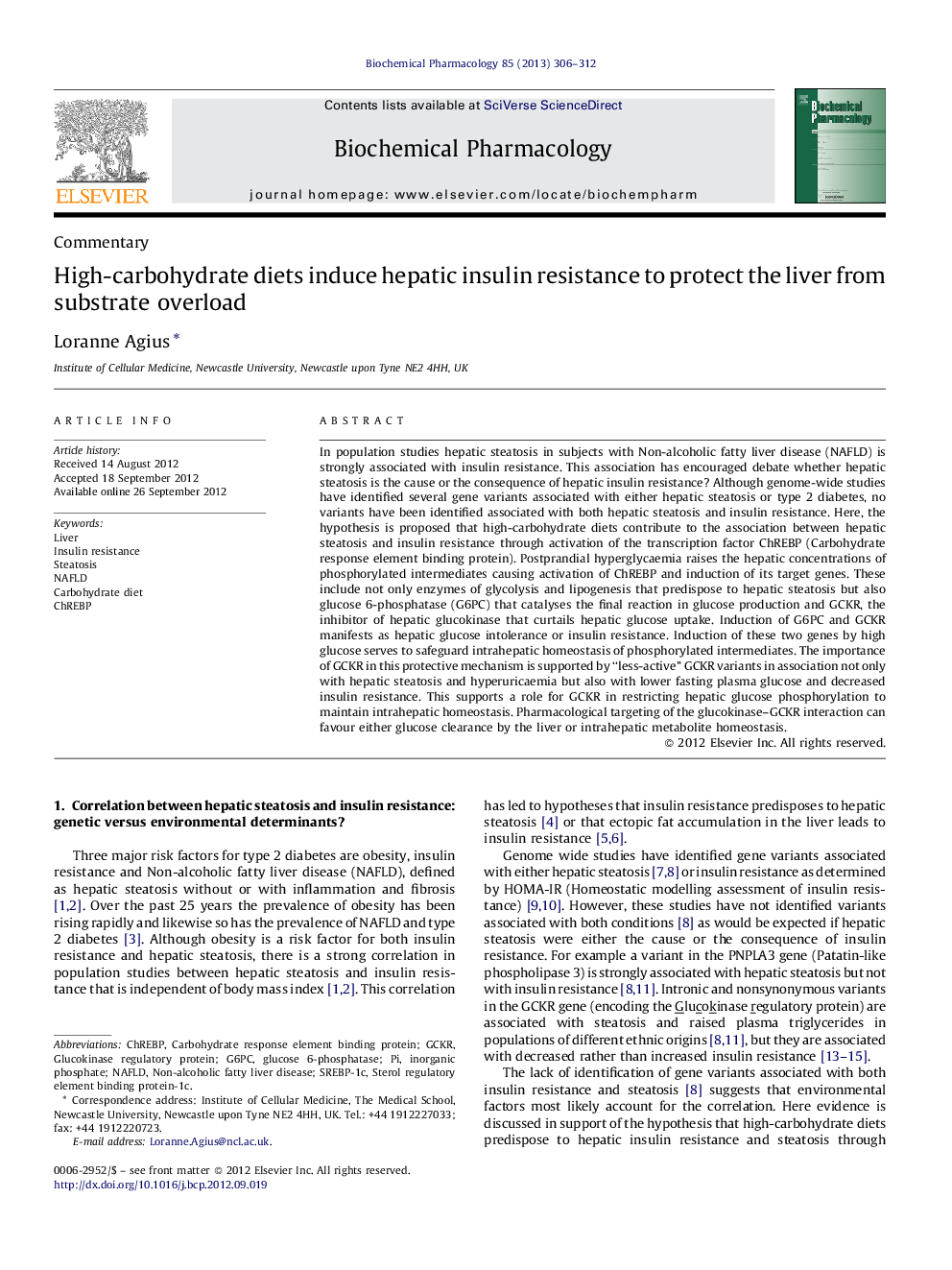| کد مقاله | کد نشریه | سال انتشار | مقاله انگلیسی | نسخه تمام متن |
|---|---|---|---|---|
| 2512983 | 1118387 | 2013 | 7 صفحه PDF | دانلود رایگان |

In population studies hepatic steatosis in subjects with Non-alcoholic fatty liver disease (NAFLD) is strongly associated with insulin resistance. This association has encouraged debate whether hepatic steatosis is the cause or the consequence of hepatic insulin resistance? Although genome-wide studies have identified several gene variants associated with either hepatic steatosis or type 2 diabetes, no variants have been identified associated with both hepatic steatosis and insulin resistance. Here, the hypothesis is proposed that high-carbohydrate diets contribute to the association between hepatic steatosis and insulin resistance through activation of the transcription factor ChREBP (Carbohydrate response element binding protein). Postprandial hyperglycaemia raises the hepatic concentrations of phosphorylated intermediates causing activation of ChREBP and induction of its target genes. These include not only enzymes of glycolysis and lipogenesis that predispose to hepatic steatosis but also glucose 6-phosphatase (G6PC) that catalyses the final reaction in glucose production and GCKR, the inhibitor of hepatic glucokinase that curtails hepatic glucose uptake. Induction of G6PC and GCKR manifests as hepatic glucose intolerance or insulin resistance. Induction of these two genes by high glucose serves to safeguard intrahepatic homeostasis of phosphorylated intermediates. The importance of GCKR in this protective mechanism is supported by “less-active” GCKR variants in association not only with hepatic steatosis and hyperuricaemia but also with lower fasting plasma glucose and decreased insulin resistance. This supports a role for GCKR in restricting hepatic glucose phosphorylation to maintain intrahepatic homeostasis. Pharmacological targeting of the glucokinase–GCKR interaction can favour either glucose clearance by the liver or intrahepatic metabolite homeostasis.
Figure optionsDownload as PowerPoint slide
Journal: Biochemical Pharmacology - Volume 85, Issue 3, 1 February 2013, Pages 306–312